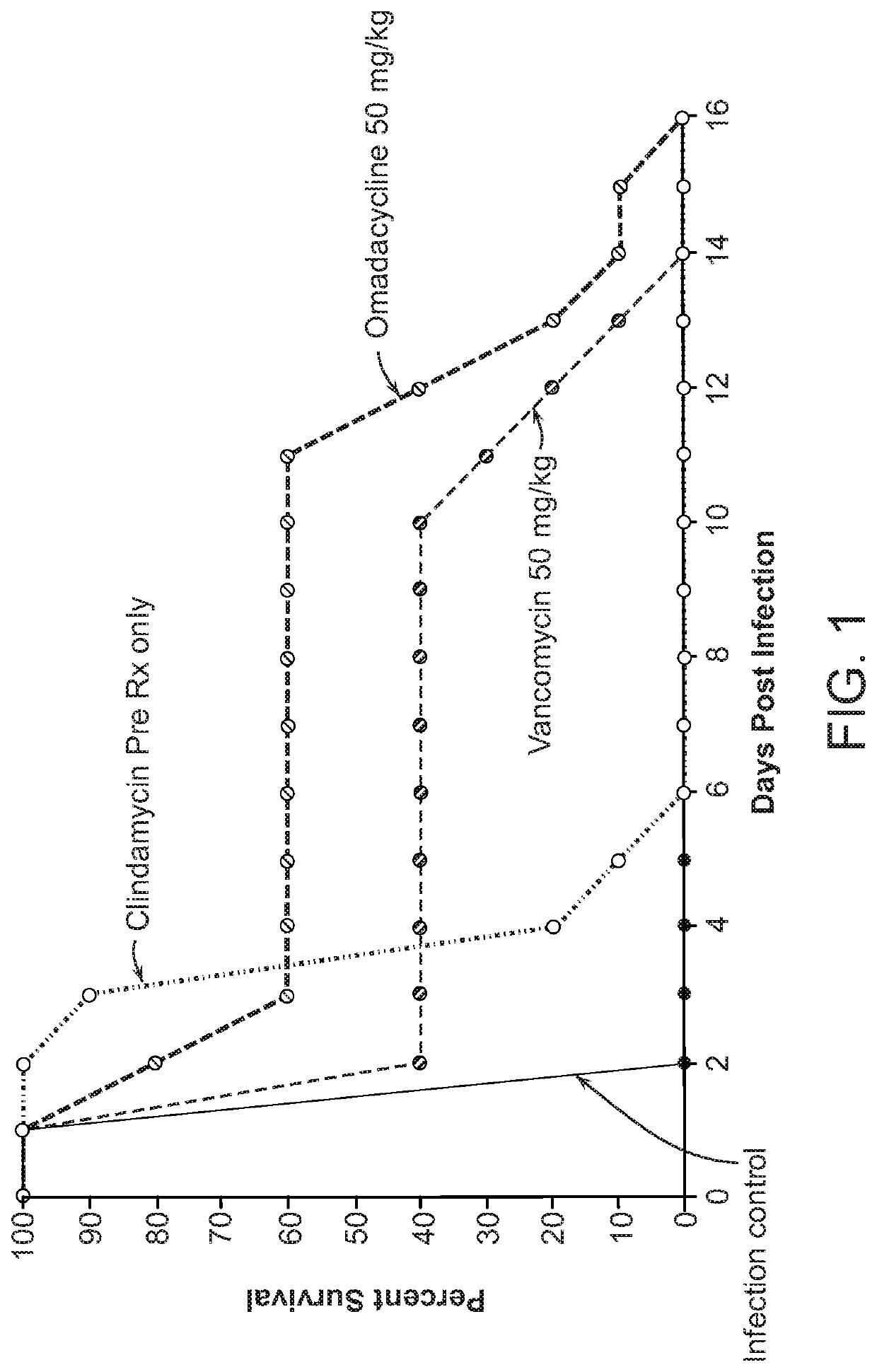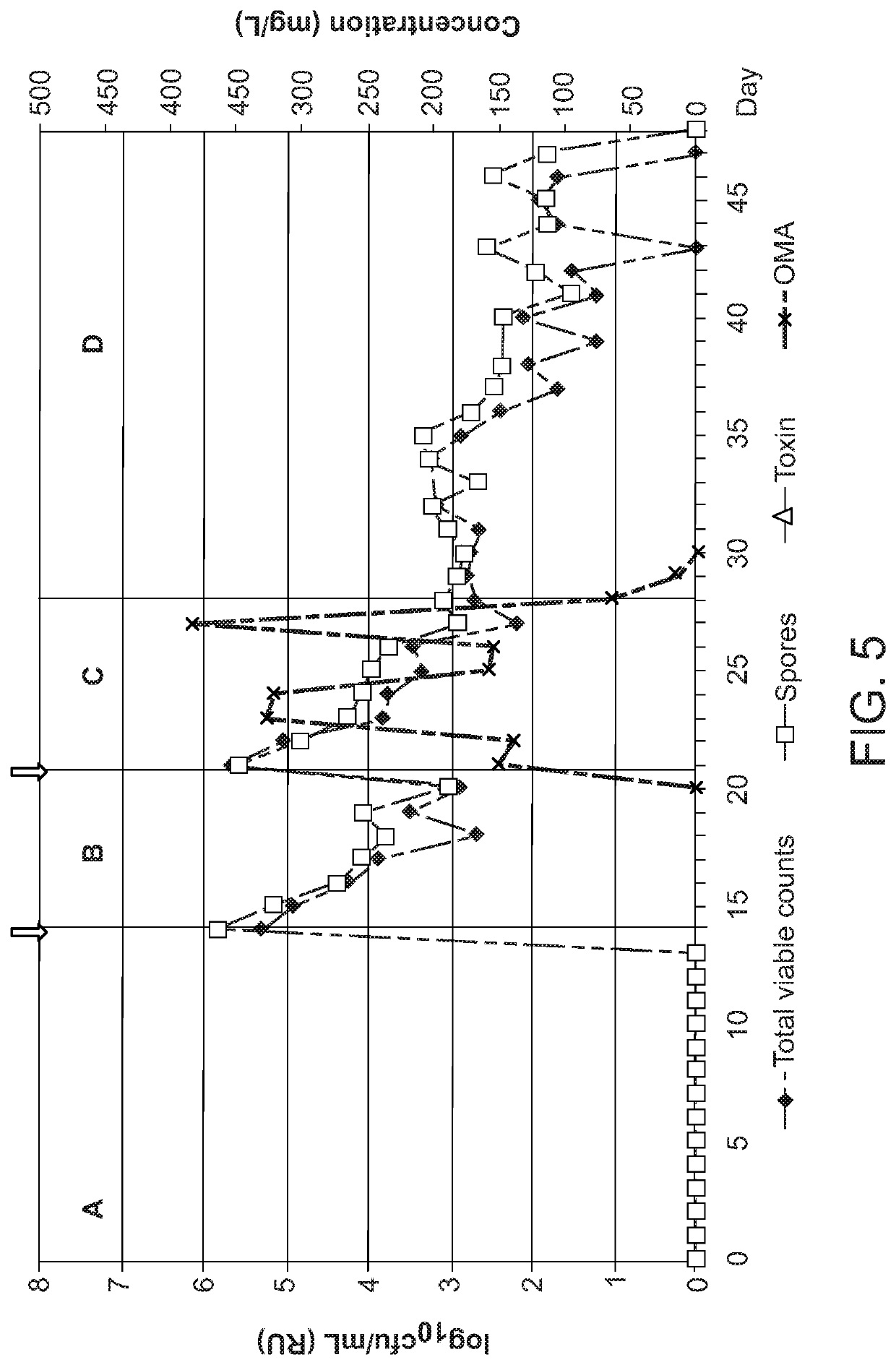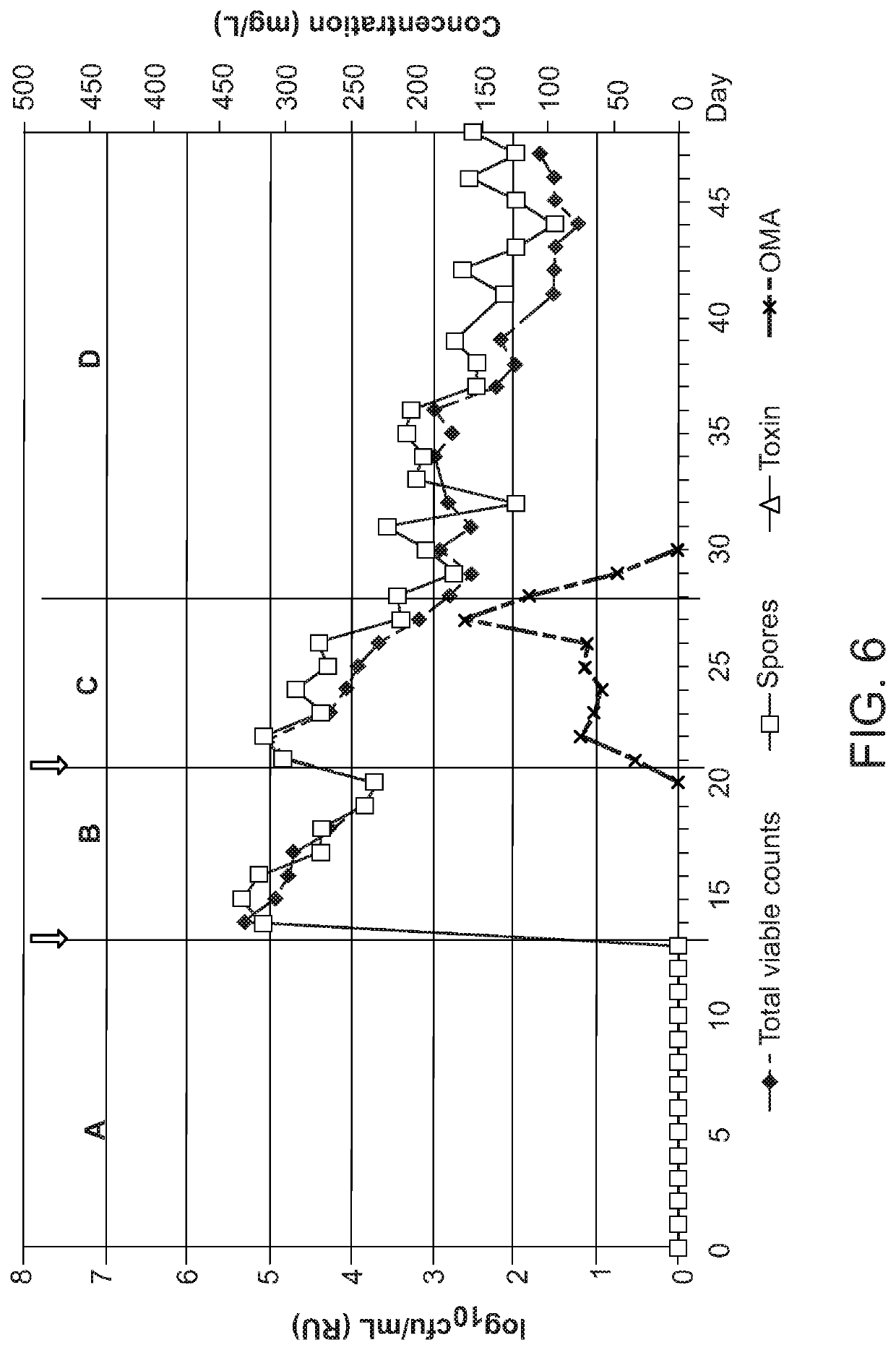Methods for treating and preventing c. difficile infection
a technology of c. difficile and antibiotic treatment, applied in the direction of tetracycline active ingredients, antibacterial agents, drug compositions, etc., can solve the problems of affecting the treatment effect of i>c. difficile /i>infections, the role of causing pathological conditions associated with i>c. difficile /i>infections is not fully understood, and the antibiotic treatment of i>c. diffcile /i>
- Summary
- Abstract
- Description
- Claims
- Application Information
AI Technical Summary
Benefits of technology
Problems solved by technology
Method used
Image
Examples
example 1
In Vitro Activity of Omadacycline (Compound A) Against C. difficile Strains
Materials and Methods
[0139]The activity of omadacycline was tested in vitro against 27 clinical isolates of C. difficile. This activity was compared to the activity against C. difficile of other comparator antibiotics that included cefotaxime, doxycycline, amoxicillin clavulanate, metronidazole, imipenem and clindamycin. The experiments were carried out using broth and agar microdilution methods according to Clinical and Laboratory Standards Institute (CLSI) guidelines. Wilkins-Chalgren broth containing each test antibiotic at the final concentration of 0.016 mg / mL to 16 mg / mL was added to the 96-well plates, which were incubated for 48 hours under anaerobic conditions. Each test was run in duplicate.
Results
[0140]The minimum inhibitory concentrations (MIC50 and MIC90) for omadacycline and other antibiotics are shown in Table 1. Specifically, MIC90 for omadacycline against C. difficile was 0.06 mg / L by broth d...
example 2
In Vitro and In Vivo Activity of Omadacyline Against C. difficile in a Hamster Model of C. difficile-Associated Diarrhea
Materials and Methods
[0142]The activity of omadacycline was determined in the hamster model of C. difficile-associated diarrhea (ViviSource Laboratories, Inc., Waltham Mass.). Male LGV-Golden Syrian Hamsters (Charles River Laboratories Inc., Wilmington, Mass.) weighing 80-100 g were used. Hamsters were kept in a room maintained at 64-76° F. (17.8-24.4° C.) with humidity set at 40%-70%, and standard rodent diet and water were available ad libitum. Hamsters were pretreated with a subcutaneous (SC) dose of 10 mg / kg clindamycin at 24 hours prior to injection.
[0143]C. difficile strain ATCC 43596 was obtained from the American Type Culture Collection, (Manassas, Va.) and cultured from freezer stocks under anaerobic conditions on Brucella agar with 5% sheep blood. Hamsters were infected 24 hours after pretreatment with clidamycin with a suspension of a 48 hour culture of ...
example 3
Effect of Omadacycline on Gut Microflora and on C. difficile Germination, Proliferation and Toxin Production in an In Vitro Model of Human Gut
Aims
[0148]To determine, using an in vitro model of C. difficile Infection (CDI), the effects of omadacyline instillation on normal gut microflora populations, and to investigate the propensity of omadacycline to induce C. difficile germination, proliferation and toxin production.
Introduction
[0149]An in vitro gut model was used to study the effects of omadacycline instillation on both normal microflora populations and C. difficile. This gut model has been validated against gut contents from sudden death victims and provides a very close simulation of bacterial activities and composition in different areas of the hindgut (Macfarlane et al., Microb. Ecol. 35, 180-7, 1998). The model consists of three vessels aligned in series, and top-fed with a complex growth medium. All three vessels are continuously stirred, anaerobically maintained at 37° C. ...
PUM
| Property | Measurement | Unit |
|---|---|---|
| concentration | aaaaa | aaaaa |
| broad spectrum | aaaaa | aaaaa |
| molecular mass | aaaaa | aaaaa |
Abstract
Description
Claims
Application Information
 Login to View More
Login to View More - R&D
- Intellectual Property
- Life Sciences
- Materials
- Tech Scout
- Unparalleled Data Quality
- Higher Quality Content
- 60% Fewer Hallucinations
Browse by: Latest US Patents, China's latest patents, Technical Efficacy Thesaurus, Application Domain, Technology Topic, Popular Technical Reports.
© 2025 PatSnap. All rights reserved.Legal|Privacy policy|Modern Slavery Act Transparency Statement|Sitemap|About US| Contact US: help@patsnap.com



